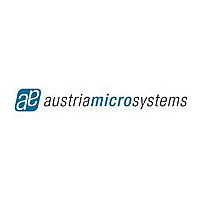AS3910-BQFT austriamicrosystems, AS3910-BQFT Datasheet - Page 37

AS3910-BQFT
Manufacturer Part Number
AS3910-BQFT
Description
IC RFID READER SPI 32-QFN
Manufacturer
austriamicrosystems
Specifications of AS3910-BQFT
Rf Type
Read / Write
Frequency
13.56MHz
Features
ISO14443A, ISO1443B
Package / Case
32-VFQFN Exposed Pad
Lead Free Status / RoHS Status
Lead free / RoHS Compliant
Other names
AS3910-BQFTTR
Available stocks
Company
Part Number
Manufacturer
Quantity
Price
Part Number:
AS3910-BQFT
Manufacturer:
AMS
Quantity:
20 000
AS3910
Data Sheet - A p p l i c a t i o n I n f o r m a t i o n
8.12 Typical Operating Sequence
At power up the AS3910 enters in the Stand-by mode. Content of all registers is set to the default state which is in most cases 0.
After the sequence of events mentioned above the AS3910 is ready to operate.
8.12.1 ISO-14443 Reader Operation
First the Ready mode has to be entered by setting the en bit of the Operation Control Register (address #01 or asserting pin EN). In this mode
the oscillator is started and the regulators are enabled. When the oscillator operation is stable an interrupt is sent. Before sending any command
to a transponder the transmitter and receiver have to be enabled by setting the bits rx_en and tx_en.
In case REQA or WUPA has to be sent, then it is simply done by sending the appropriate direct command. Or else, the following sequence has
to be followed:
After the transmission is executed, the AS3910 receiver automatically starts to observe the RFI inputs to detect a transponder response. The
RSSI and AGC (in case it is enabled) are started. The framing block processes the subcarrier signal from receiver and fills the FIFO with data.
When the reception is finished and all the data is in the FIFO an interrupt is sent to the microcontroller (INTR due to end of receive), additionally
the FIFO Status Register displays the number of bytes in the FIFO so the microcontroller can proceeded with downloading the data.
In case there was an error or bit collision detected during reception, an interrupt with appropriate flag is sent. Microcontroller has to take
appropriate action.
In case of an error it usually repeats the command; it can also check the RSSI level in the Receiver State Display Register and change the AM/
PM mode in case the RSSI is low.
In case of a bit collision it will consult the Collision Register to determine in which bit there was collision.
Transmit and Receive In Case Data Packet is Longer Than FIFO.
above is modified.
Before transmit the FIFO is filled. During transmit an interrupt is sent when remaining number of bytes is lower then the water level (INTR due to
FIFO water level). The microcontroller in turn adds more data in the FIFO. When all the data is transmitted an interrupt is sent to inform the
microcontroller that transmission is finished.
During reception situation is similar. In case the FIFO is loaded with more data than the receive water level, an interrupt is sent and the
microcontroller in turn reads the data from the FIFO (additionally to the interrupt the FIFO Status Register displays the number of bytes which
were not read out). When reception is finished an interrupt is sent to the microcontroller (INTR due to end of receive), additionally the FIFO
Status Register displays the number of bytes in the FIFO which are still to be read out.
8.12.2 NFCIP-1 Operation
Only the NFCIP-1 106 kbps active mode is supported.
For operation in this mode, the bit nfc has to be set in the ISO Mode Definition Register.
Next the NFCIP Field Detection Threshold Register (address #14) has to be written to define the thresholds for Target activation and RF Collision
avoidance
Please note that in the NFC mode the transmitter enable bit (tx_en) is never set in the Operation Control Register. The transmitter is activated
automatically by the NFC transmit commands).
www.austriamicrosystems.com/HF_RFID_Reader/AS3910
First action of the microcontroller after a power-up should be to load the ISO Mode Definition Register and the configuration registers to con-
figure reader operation.
Since the regulators are by default set to the maximum 3.4V, which means that they are at supply voltages lower then 3.4V transparent, it is
advised to send the direct command Adjust Regulators to improve the system PSRR.
In case the LC tank trimming is implemented the direct command Calibrate Antenna has to be sent.
In case the AM modulation will be used (ISO-14443B for example) setting the modulation depth in the Modulation Depth Definition Register
and sending the command Calibrate Modulation Depth is suggested next.
1. Send the direct command Clear
2. Define the number of transmitted bytes in the registers 0B and 0C
3. Write the bytes to be transmitted in the FIFO
4. Send the direct command Transmit with CRC or Transmit without CRC (whichever is appropriate)
5. When all the data is transmitted, an interrupt is sent to inform the microcontroller that the transmission is finished (INTR due to end of
transmission).
(see External Field Detector on page
15).
Revision 2.3
In case a data packet is longer then FIFO the sequence explained
37 - 47













